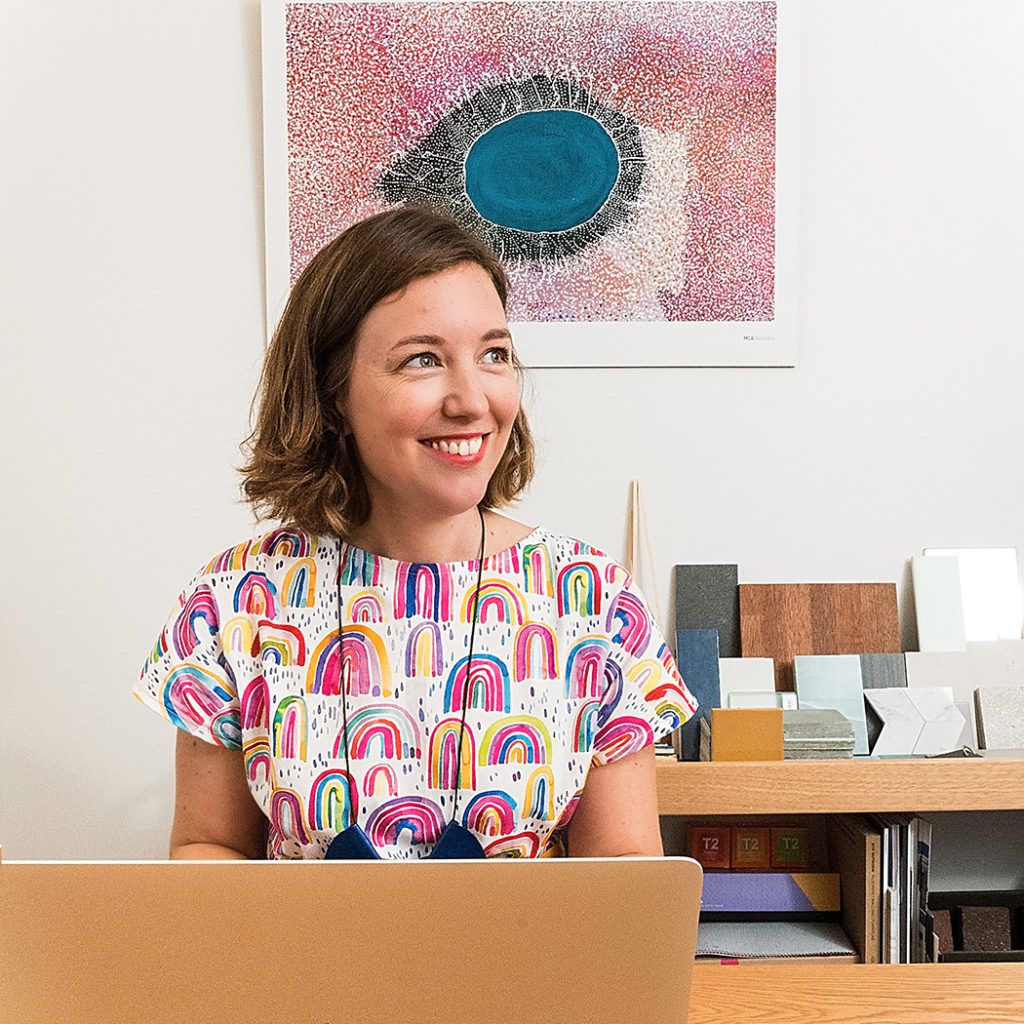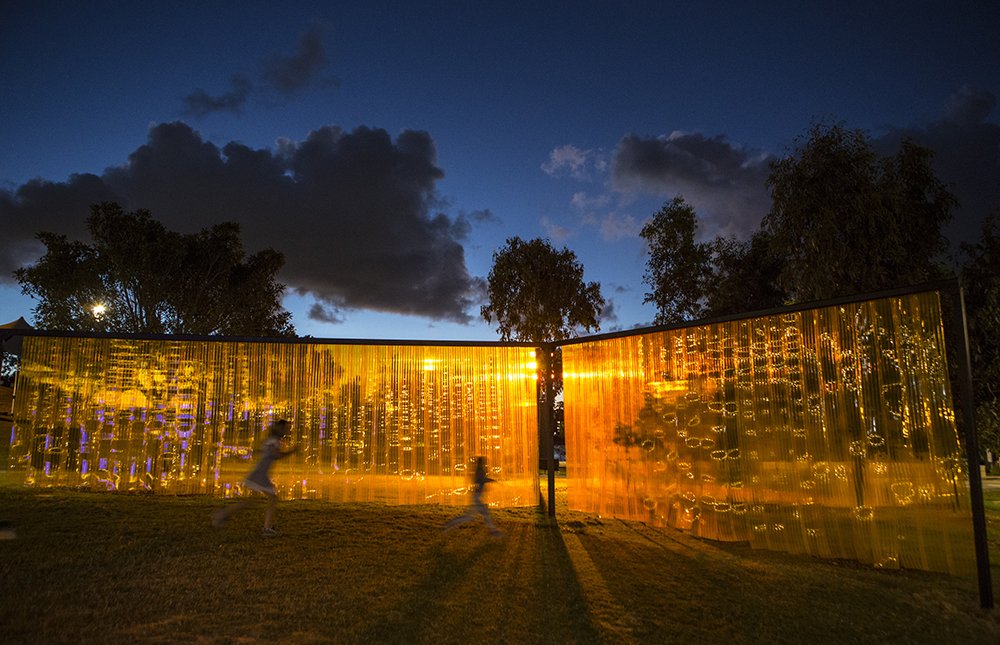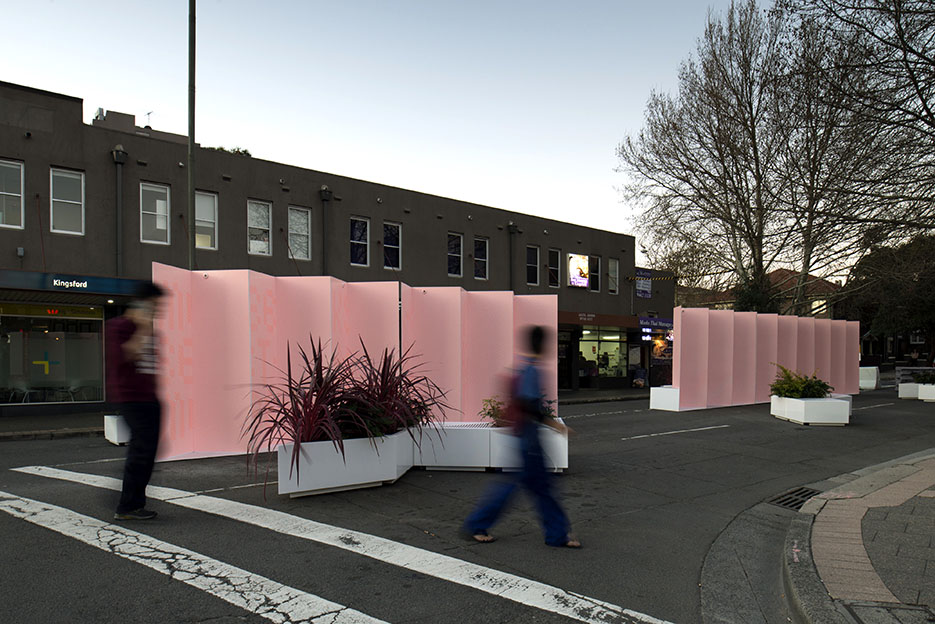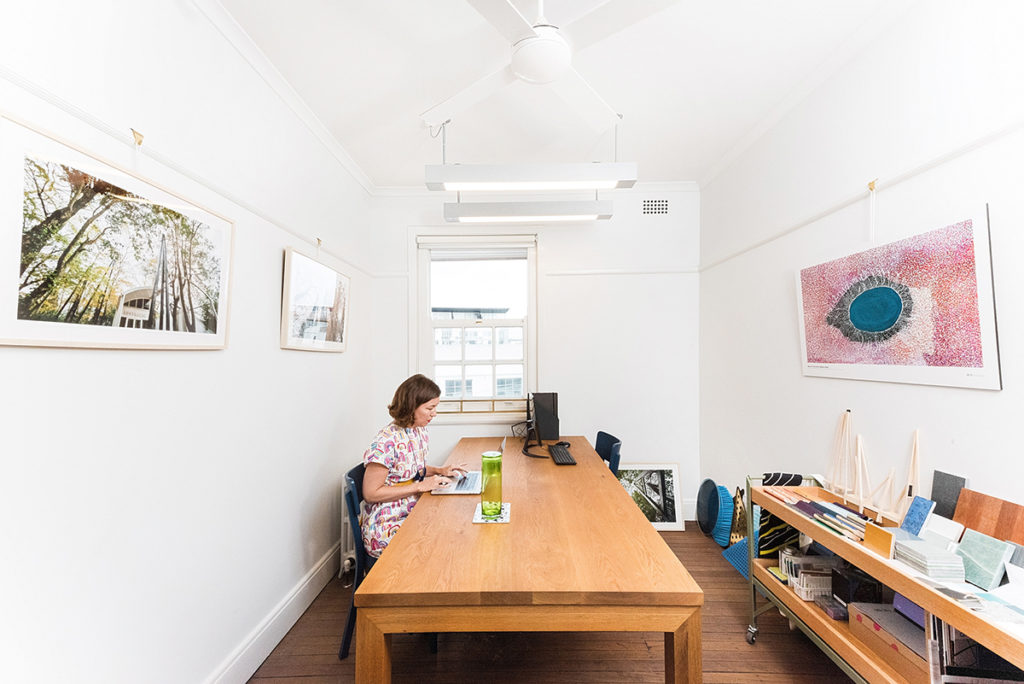#065
Architecture for the people:
Claire McCaughan of Archrival
Words Meagan O’Connell
Images Rhiannon Hopley / Supplied

Join our creative community!
With a private office at Joynton Avenue Creative Centre, you’ll be joining local change-makers like Claire in a collaborative and supportive environment.
Visit 107.org.au to find out more.
Part of the growing community of creative businesses at Joynton Avenue Creative Centre, Archrival is not your typical architecture firm.
Founded in 2011, this non-profit organisation’s mission is to bring innovation and excitement into the field of architecture – one which can sometimes feel out of touch with the everyday city-dweller. Co-founder Claire McCaughan runs both Archrival and Custom Mad, an architectural studio for houses, restaurants, and commercial work.
This month, as we champion the work of the resident artists and organisations who call 107 Projects home, we sat down with Claire to learn more about her passion and why architecture is not just for wealthy people and institutions.
How would you describe what you do?
I’m an architect. I’ve been practicing for about 10 years. I run two different studios. One is called Archrival, which is a not-for-profit design studio that I run with Lucy Humphrey. We use healthy competition to bring out the best design solutions. So, often when we work with institution-type organisations we try and get to the root of the problem in a positive way. The type of work we do is public artworks and strategic plans for different types of organisations, and then on the other side of what I do is running an architecture studio, called Custom Mad.

What are your values as an architect?
My values are that architecture should be accessible, and not just for wealthy people, institutions, or schools. The public should be encouraged to understand what architecture is, how to engage in it, and how to contribute to it. This is easier when it comes to developing the design of a house, but for public buildings this is really hard. However, it makes the building more accessible if more people are involved in the making of it.
Custom Mad’s values are that everyone should have access to a comfortable place. As a company we are interested in what creates homelessness, and Custom Mad financially contributes to the cause. We believe that everyone should have access to a place that they feel comfortable in because we believe everyone can be better humans if they have a safe space.
Where do you draw inspiration for your designs?
I draw my inspirations from two things, natural materials and the site. The site is where the building or installation is going to be placed. The site also considers the natural light of the environment, any natural materials that are there, vegetation, the way the land falls, the slope, and the way the sun comes in during the morning and afternoon. I also take into account the natural materials I can work with when designing, such as concrete and timber. Additionally, I take into account what the client wants and what place they are trying to make for the end user, or the person that is going to use the structure.
I’ve also started working with an Indigenous designer more recently. By working with an Indigenous designer, Archrival can learn about the importance of storytelling. Each aspect of the landform and vegetation that is on the site can tell a story. Lucy Simpson, the designer I worked with, interprets the landscape based on certain types of vegetation, rivers and trees on the site.

What do you love the most about what you do?
I don’t actually get to do any of the making myself, but getting to see the process of making the structures is my favourite part. Seeing the people lay out beautiful patterns of a tile or a steel welder make a design is so inspiring.
What has been a career highlight so far?
In 2012, Archrival went to Venice for the Venice Architecture Biennale. We were collected as one of the six contributors. That project was an arena to play foosball. Since we were installing work in Italy, we called it Arena Calcetto because “calcetto” means mini football in Italian. We had 200 handmade foosball players made from designers and architects from all over the world. We were the youngest and the only women team in the competition. It was just an amazing experience.
What is your favourite thing about your office? What makes you feel creative about the space that you are working in?
I like working with the people at 107 Projects – they are just my kind of people, we speak the same language, are inspired by the same things, and have similar values. The other thing that I like is that the venue at Green Square is beautiful. Its natural materials, the versatile venue setting and interesting residents make it an inspiring building to work in everyday.

Where do you go for coffee on a Sunday?
I go to Fleetwood Macchiato on a Sunday!
How does Archrival go about pursuing their goal of reshaping architecture and design practice?
Mainly people do not think about architecture because the public is not engaged in it. By creating projects that the public can physically engage in, we pursue our goal of reshaping the meaning of architecture. For example, we have this mural called Jigsaw at Bondi Junction. It is six meters long and it has a hundred rotating blocks. While you are waiting for the bus, you can stand and play naughts and crosses with the blocks. Or, you can line up the blocks up to make a portrait of local people. This structure exemplifies our goals as a company because it allows people to interact with their environment and explore their own understanding of architecture.
Is Archrival working on a project currently? If so, what is it?
I’m working on a project I can’t talk about at the moment, but I am looking forward to finding other projects for the future!
